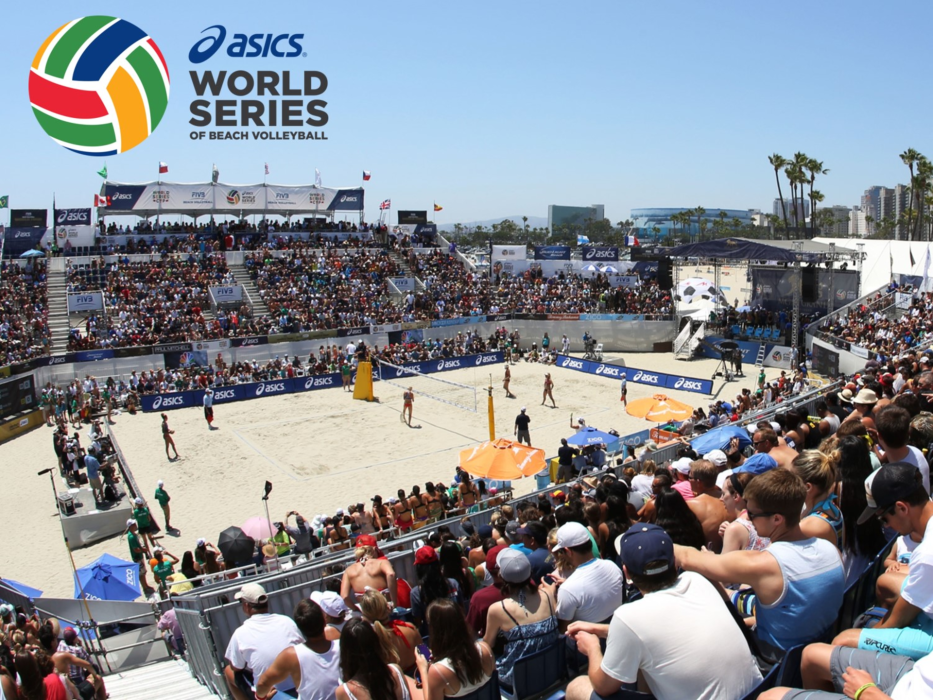The World Cup is a time for soccer to steal the spotlight on the global sports stage. And while many have been caught up in the football frenzy, Leonard Armato has been focusing on an entirely different sport: volleyball. As the founder and CEO of Management Plus Enterprises, one of the creators of the ASICS World Series of Beach Volleyball along with NBC Sports and the Fédération Internationale de Volleyball, he’s relying on marketing to bump the sport to the forefront.
The ASICS World Series of Beach Volleyball is a week-long beach festival and volleyball tournament that takes place in Long Beach, CA from July 22 to 27. Top athletes from across the globe, including three-time U.S. Olympic gold medalist Kerri Walsh Jennings, compete for a $1 million purse. Fans can also play against each other for cash prizes, and enjoy performances by musical acts.
The event was born out of the success beach volleyball experienced at the 2012 London Olympic games, as well as the popularity and high gross value of music festivals like Coachella and group competitions like Tough Mudder, Armato says. Consider: Tough Mudder has accumulated more than 1.3 million participants to date, according to its website, and garners from $2 million to $10 million increases in local economic activity per event.
“My theory is go big or go home,” says Armato, who is also the former CMO of shoe company Skechers and president of Skechers Fitness Group. “To cut through the clutter…[and] create something that’s interesting and has mass appeal, you need to draw from what’s trending in pop culture.”
Nearly three million watched the televised event in the United States alone in its inaugural year, and an additional 11 million tuned in outside of the U.S. With the event entering its second year, Armato plans to step up the tournament’s positioning. For instance, he’s aiming to grow the event’s TV viewership to more than 15 million, as well as increase the tournament’s attendance by 20% and fan participation by 50%.
To achieve these goals, the tournament is targeting a range of prospects, including volleyball fans, general sports enthusiasts, people who enjoy social competitions, and music lovers.
“What we’re trying to do now is really tap into the grass roots who like volleyball as a whole and make sure that we can reach as big of an audience as we can,” he says. “Our goal and objective is to appeal to a mass audience—not just a niche audience.”
The event is also relying on different channels to appeal to different audiences. For instance, the brand is leaning heavily on social—including Facebook buys, blogs, and influencers with prominent followings—to target various volleyball communities. However, the tournament is turning to radio to reach prospects within certain demographics, such as millennials. The competition is using NBC TV spots and PR to appeal to broader audiences.
“We try to fish where the fish are in that respect,” Armato says.
Furthermore, sponsors are promoting the event in their respective channels. For example, title sponsor and athletic footwear company ASICS produced a series of workout videos for volleyball players starring Walsh Jennings and ASICS trainer Michelle Lovitt. In addition, the company has a designated landing page where people can sign up for a sweepstakes, shop ASICS beach volleyball bikinis, and watch other videos about the tournament.
Armato expects the event to be “in the neighborhood” of one billion impressions by the time it kicks off.
But with the event less than a week away, one has to wonder: Have these efforts been enough to stand out amid the World Cup clutter? Although the World Cup is over, Armato is aiming to leverage the “fever” that people have for international competition: “Hopefully, we can transfer the excitement and interest of the people who have been watching the World Cup to the World Series, which is the same kind of thing. “








